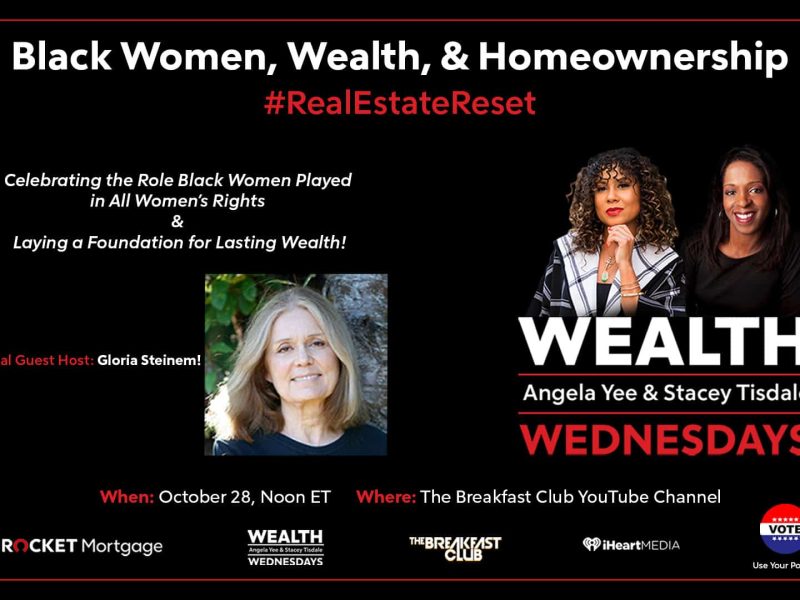
It has been well documented that marginalized communities face wage and employment discrimination. A significant wage gap exists between women and men, and people of color experience unfair employment practices. But did you know that members of the disabilities community also experience a significant amount of discrimination? Since October is National Disability Employment Awareness Month, this is a a perfect time to shed light on barriers people with disabilities face when it comes to employment practices and, in particular, accessible employment.
Twenty five percent of Americans have a disability, and experience twice the unemployment rate than those without disabilities. For disabled women and for disabled women of color, the rates of unemployment are even more staggering. Too often, the stigma associated with disabled employees is that they cannot be as productive as nondisabled employees. Although this may be true for some, this is not true for all. To better understand the challenges the disability community faces, it is therefore important to expose a number of myths.
Yes, being disabled is expensive, especially when no insurance coverage is available. Mobility devices, medical equipment, medication, doctors’ visits, and other costs related to being disabled can mount and quickly put a person, even an employed person, into debt. Disabled people therefore need insurance that works for them and will pay for the care they need in order to live, but Medicaid, one of the few available options, comes with several obstacles. One obstacle is that, depending on the state a person resides, Supplemental Security Income (SSI) is required in order to receive Medicaid. SSI validates a person’s disability status, and therefore ensures the need for Medicaid. Yet SSI recipients are subject to many strict and limiting rules. For example, in order to receive SSI, an individual has to prove inability to work, and even if approved, SSI only pays a maximum of $783/month, which is not enough for most individuals to live on. Another caveat is that SSI recipients cannot have more than $2,000 in their bank account or in total assets at one time. In addition, an SSI recipient’s earned income is not allowed to exceed that of the maximum SSI payment.
This creates a huge dilemma for people with disabilities. While healthcare is often too costly without Medicaid assistance, receiving Medicaid prevents disabled people from getting a job because their earnings may be too high to qualify, while they can only possess a small amount of savings. These are major reasons why some disabled people who are able to work full time choose to only work part time; they fear losing their healthcare. Yet, working part time often prevents the employee from receiving employer-paid health benefits, making people more dependent on Medicaid. This also forces many disabled people to live with their families or friends, which in turn can inhibit their ability to become independent.
In addition to healthcare challenges, people with disabilities often encounter barriers to employment in the form of discrimination. Many job descriptions require the ability to lift and carry a minimum amount of weight, even if doing so is not actually a part of the job. This immediately discriminates against many people, especially those who are disabled, who cannot fulfill this requirement. Further, disabled people often wrestle the decision of whether or not to disclose their disability when applying for a job. Although a person is not legally required to disclose a disability on a job application, visibly disabled people are not able to conceal it. Kaycee Marshall, a fashion designer in a wheelchair, says she has faced roadblocks when applying to jobs and internships in her field. “I was so excited to get an internship for a luxury designer in New York. After I had already accepted the job, they noticed my Gmail picture showed me in a wheelchair and informed me that I wouldn’t be able to take the position because ‘[their studio] is up a flight of stairs.’” Kaycee recalls. “I’m not sure how true this is, but I was devastated. I didn’t disclose my disability at the internship and I then removed the picture from my email. I will never know how many rejections I received based on my disability alone.”
Once a disabled person becomes employed, other challenges may arise. Due to waiver 14© under the Fair Labor Standards Act, employers like Goodwill and Opportunity Village are legally able to pay disabled employees less than minimum wage. Employers are allowed to “prove” to the Department of Labor that they should be able to pay their employees less than minimum wage and can do so by showing that the employee’s production rate is lower than the average nondisabled worker. This Act lends itself to ableist and capitalistic standards, standards that are not in place for nondisabled people.
Within the workplace, accommodations for disabled employees are often challenging, but they don’t need to be. A study conducted by the Job Accommodation Network found that “60% of workplace accommodations can be made for free, while the remaining cost is only $500 per employee, on average.”. For example, Andreana Franco, a higher education program coordinator with two autoimmune diseases, has to drive an hour to and from work on a daily basis. Her disability makes it difficult for her to concentrate and affects her energy levels, which make the long drives nearly impossible. Andreana also receives infusion treatments once a month, forcing her to take 3-5 days off from work each time. Although she has asked her employer if she could work from home, her request has been denied, claiming that her job is impossible to do from home. That is, until COVID-19 forced her employer to grant her request.
The COVID-19 pandemic has now required many employers to invoke some important accommodations, like working from home, that disabled people have been requesting for decades. It has also, in turn, opened employers’ eyes to the important need to provide accommodations for people with disabilities, particularly as an increasing number are becoming disabled due to the pandemic.
Since disabled people live in a world that wasn’t built for them, they have had to develop skills, such as adapting and problem solving; skills that are incredible assets and are typically sought after in the workplace. Further, hiring disabled people creates a more diverse and inclusive work environment, and inclusive companies have been shown to be “twice as likely to have higher total shareholder returns than their peers, on average” according to recent research conducted by Accenture. In addition, it was found that companies hiring disabled people saw “…28% higher revenue, double the net income and 30% higher economic profit margins over the four-year period we analyzed, on average.” Further, staff turnover rates for more inclusive companies are as much as 30% lower than those that are not.
Yet, still, beyond all of these benefits, perhaps the most important reason of all to hire people with disabilities is the right thing to do.
Employers looking to increase the number of their employees who are disabled, and disabled people who are looking to work with employers that are already embracing the disability community, can find resources here.

Cheyenne Leonard is a fellow with The Loreen Arbus Accessibility is Fundamental Program, an inaugural fellowship created to train women with disabilities as professional journalists so that they may write, research and report on the most crucial issues impacting the disabilities community.


